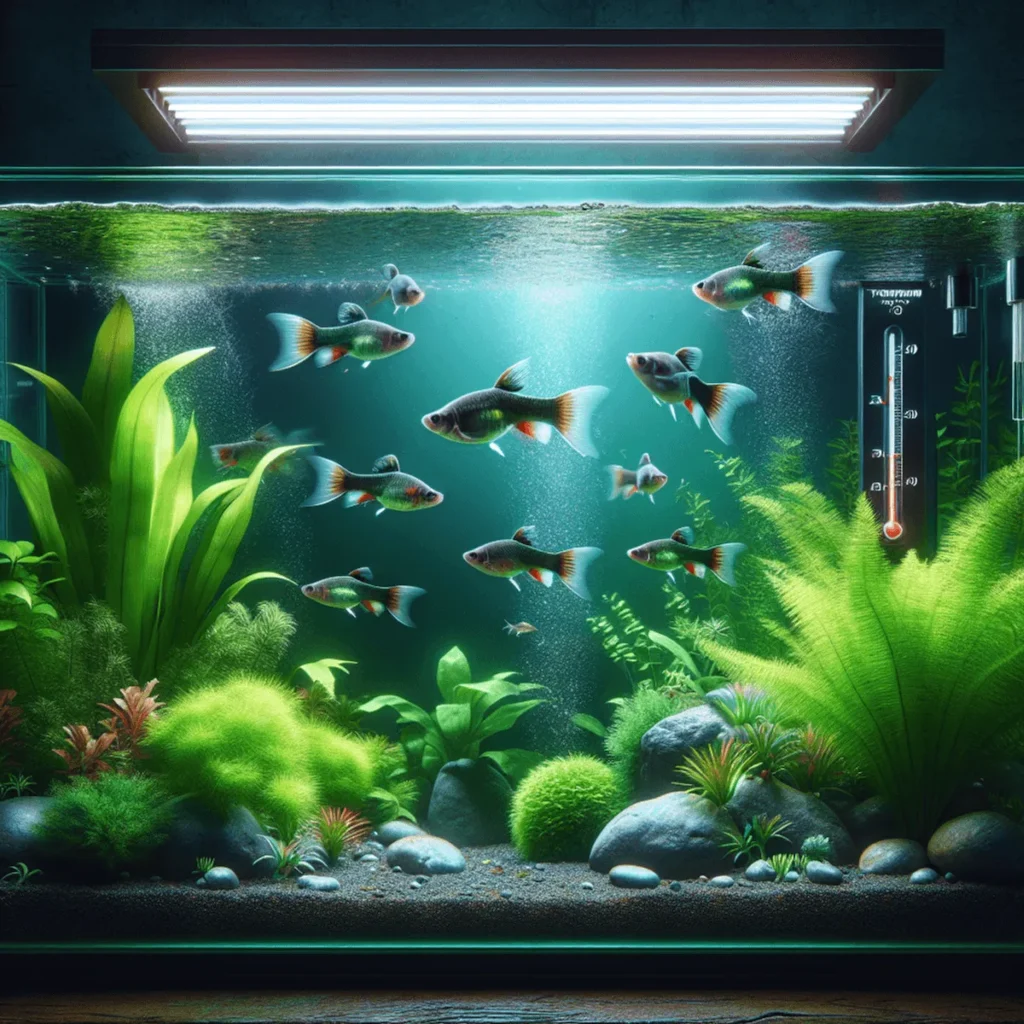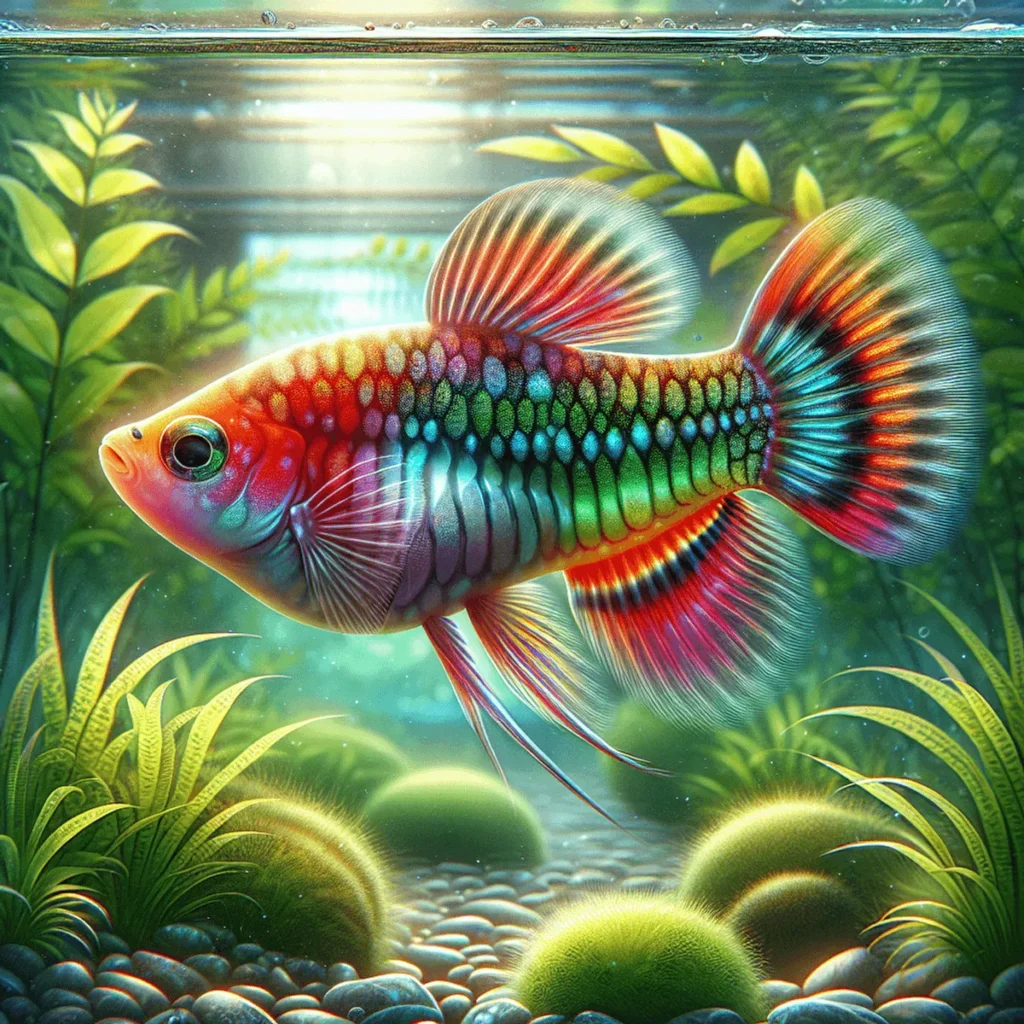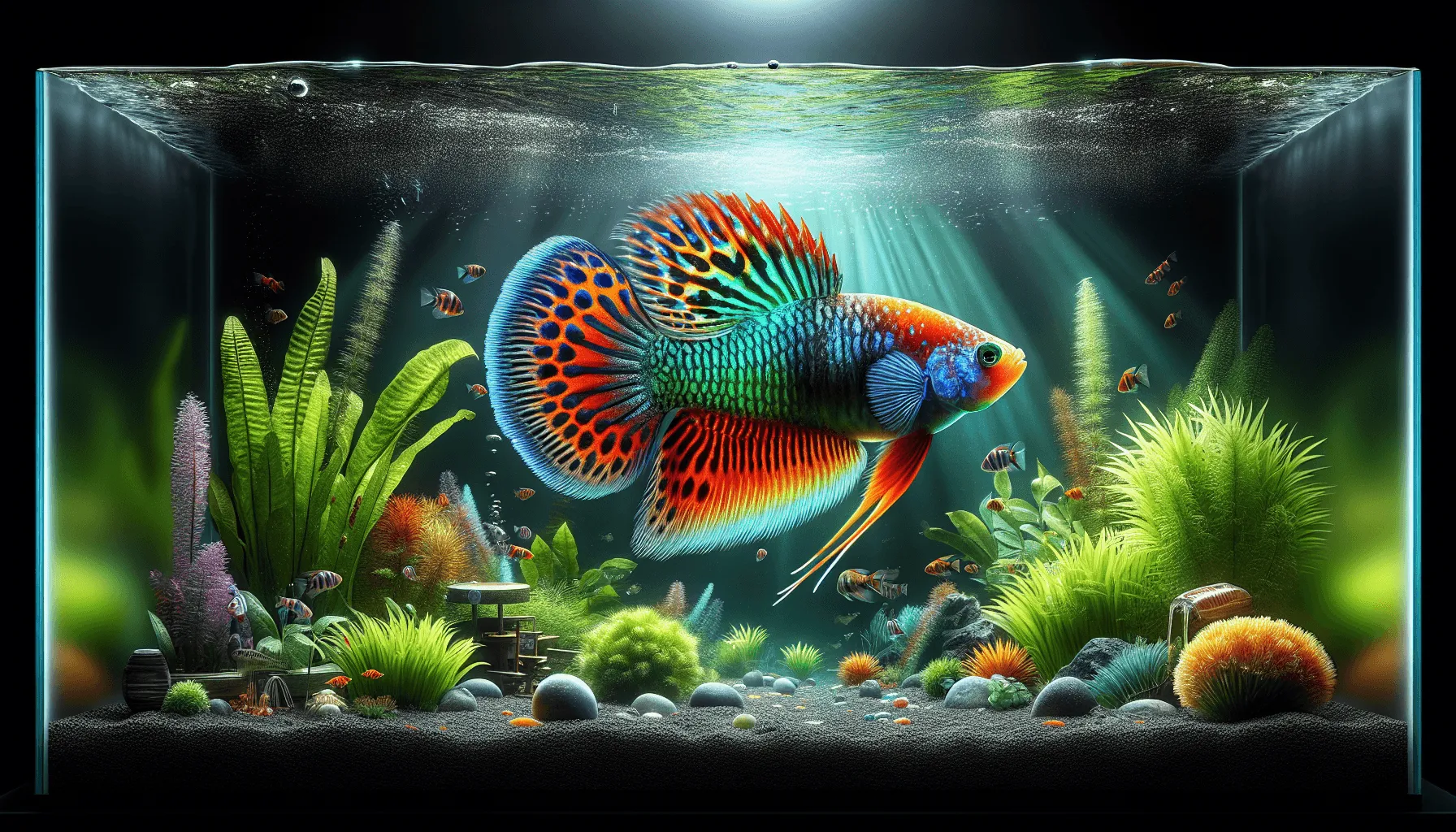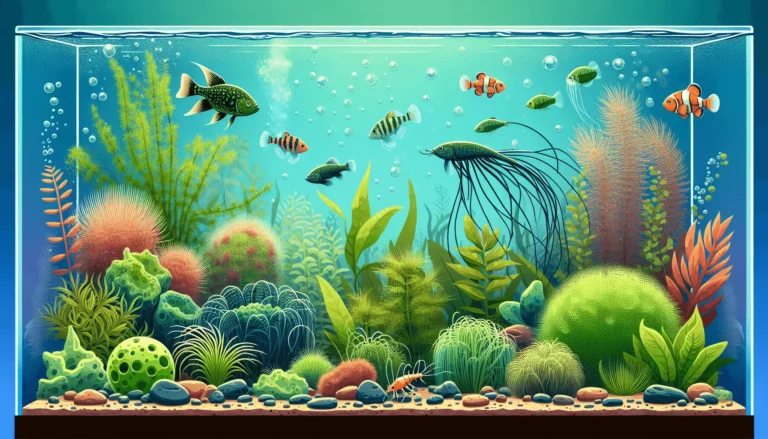Recognizing the warning signs in molly fish can be crucial for their survival. These popular aquarium pets often exhibit specific behaviors and physical changes when they are in distress or suffering from illness.
In this article, we will discuss seven key indicators that may suggest your molly fish is dying:
- Color Fading
- Lethargy
- Loss of Appetite
- Clamped Fins
- Rapid Breathing
- Unusual Swimming Patterns
- Physical Symptoms
By understanding these signs, you can diagnose potential problems early and take appropriate action to treat them. This knowledge helps ensure the health and longevity of your molly fish.
Understanding Molly Fish Health
Common health issues in mollies can range from fungal infections to parasitic infestations. These fish are susceptible to diseases such as Ich, fin rot, and swim bladder disease. Recognizing these ailments early can be crucial for their survival.
Early diagnosis is vital. The connection between water quality and fish health cannot be overstated. Poor water conditions are often the root cause of many health problems in molly fish. Parameters such as pH levels, ammonia, nitrite, and nitrate concentrations should be consistently monitored.
Common Diseases in Molly Fish
Here are some common diseases that affect molly fish:
- Ich (White Spot Disease): Characterized by white spots on the body and fins.
- Fin Rot: Leads to frayed or disintegrating fins.
- Swim Bladder Disease: Causes erratic swimming patterns.
Maintaining Optimal Water Quality
Maintaining optimal water quality is essential for the health of your molly fish. Here are some tips to ensure good water conditions:
- Perform regular water changes to remove accumulated toxins.
- Use a reliable filtration system to keep the water clean and clear.
- Test the water regularly for pH levels, ammonia, nitrite, and nitrate concentrations.
Healthy water conditions promote robust immune systems in your mollies, making them more resilient to potential health threats.
By understanding these factors, you can better care for your mollies and detect any potential problems early on. Early intervention not only saves your fish but also ensures a thriving aquarium environment.
Water Quality and Its Impact on Molly Fish Health

Optimal water conditions are crucial for the health of your molly fish. Maintaining a stable environment with the right parameters can significantly reduce stress and prevent diseases.
Key Water Parameters for Mollies:
- Temperature: 75-80°F (24-27°C)
- pH Level: 7.5-8.5
- Ammonia: 0 ppm
- Nitrite: 0 ppm
- Nitrate: <20 ppm
Poor water quality often leads to health issues such as ammonia poisoning, which is highly toxic to mollies. Ammonia levels should always be at zero; even a slight increase can cause severe stress and respiratory problems. Regular testing using reliable water testing kits helps you monitor these parameters effectively.
Tips for Maintaining Good Water Quality:
- Regular Water Changes: Perform weekly water changes of about 25-30% to dilute toxins.
- Use a High-Quality Filter: Ensure your filter is appropriately sized for your tank and clean it regularly.
- Avoid Overfeeding: Overfeeding leads to excess waste, increasing ammonia levels.
- Test Water Frequently: Utilize testing kits to keep track of ammonia, nitrite, nitrate, and pH levels.
- Condition New Water: Always treat tap water with a dechlorinator before adding it to the tank.
Maintaining optimal water conditions not only keeps your molly fish healthy but also enhances their coloration and activity levels.
Seven Warning Signs That Your Molly Fish May Be Dying
1. Color Fading
Recognizing color fading in your molly fish is crucial for identifying potential health issues. Healthy mollies are known for their vibrant and consistent colors. When a molly fish starts to lose its color, appearing pale or dull, it indicates stress or illness.
Healthy vs. Unhealthy Coloration
- Healthy Coloration: Bright, vivid hues that are consistent across the body. For example, a healthy black molly will display a rich, deep black color without any patches of discoloration.
- Unhealthy Coloration: Faded or patchy colors can be signs of distress. A once brightly colored molly showing pale spots or an overall dull appearance suggests an underlying issue.
Common Causes of Color Fading
- Stress: Factors such as sudden changes in water temperature, poor water quality, or overcrowding can cause stress, leading to color fading.
- Illness: Diseases like ich or bacterial infections often result in noticeable color changes. Pay attention to other symptoms accompanying the color fading to diagnose the issue accurately.
- Nutritional Deficiency: A lack of essential nutrients can affect the pigmentation of your fish. Ensure they receive a balanced diet formulated for their species.
Monitoring your molly fish’s coloration regularly helps you catch early signs of distress. Quick action can make a significant difference in their recovery and overall well-being.
2. Lethargy
Lethargy in molly fish shows up as a noticeable drop in their activity levels. Normally, mollies are lively and swim actively around the tank. But when a molly spends most of its time at the bottom of the tank or barely moves, it’s a sign that something’s wrong.
Common reasons for lethargy include:
- Poor Water Quality: High levels of ammonia, nitrites, or nitrates can make them uncomfortable and inactive.
- Inadequate Diet: Not getting enough essential nutrients can lead to lower energy levels.
- Disease or Infection: Internal parasites, bacterial infections, or other illnesses often cause lethargy.
- Stress: Things like overcrowding, incompatible tank mates, or sudden changes in water temperature can stress out mollies and affect their activity.
Spotting lethargy early can help you act quickly to fix any underlying problems and boost your molly fish’s health.
3. Loss of Appetite
Recognizing changes in feeding habits is crucial when identifying signs of a dying molly fish. Healthy mollies are generally eager to eat, displaying active behavior during feeding times. A loss of appetite often signals underlying health issues.
How to Observe Feeding Habits:
- Monitor the amount of food consumed during regular feedings.
- Note any reluctance or refusal to eat.
- Observe if the fish shows interest in food but fails to consume it.
Common Causes Behind Decreased Appetite:
- Poor Water Quality: Contaminated water can lead to stress and illness, reducing appetite.
- Illness or Disease: Conditions like bacterial infections or parasites can make eating uncomfortable or impossible. For more information on common fish diseases, you can refer to this resource.
- Stress: Factors such as overcrowding, aggressive tank mates, and sudden changes in environment can contribute to loss of appetite.
By familiarizing yourself with these signs, you can take prompt action if you notice any changes in your fish’s behavior or appearance. Regular observation and ensuring optimal tank conditions are key in preventing common causes of death in mollies. If you’re considering adding more fish to your tank, it’s important to research what are the best fish for aquaponics and understand how different species interact with each other.
4. Clamped Fins
Identifying clamped fins is crucial when assessing the health of your molly fish. Healthy mollies typically display their fins spread out, creating a full and open appearance. When a molly’s fins are held close to its body, this condition is known as clamped fins.
Understanding fin positioning in mollies and its significance:
- Normal Fin Positioning: Fins should be extended and appear vibrant.
- Clamped Fins: Fins are tight against the body, indicating stress or illness.
Potential causes for clamped fins include:
- Poor Water Quality: High levels of ammonia, nitrites, or nitrates can cause significant distress.
- Disease: Bacterial infections, parasites, or fungal infections often lead to clamped fins.
- Stress: Factors such as overcrowding, sudden changes in water parameters, or aggressive tank mates can contribute to this symptom.
By familiarizing yourself with these signs, you can take prompt action if you notice any changes in your fish’s behavior or appearance. Recognizing clamped fins early allows you to address potential issues before they escalate.
5. Rapid Breathing
Observing the breathing rate of your molly fish is crucial in identifying symptoms of distress. Rapid gill movement often indicates respiratory issues, which can be a symptom of dying molly fish. Healthy mollies breathe steadily and calmly, while labored or accelerated breathing can point to several problems.
Factors leading to rapid breathing include:
- Low Oxygen Levels: Poor water aeration or high temperatures can reduce oxygen availability.
- Ammonia or Nitrite Poisoning: Elevated levels of these toxic substances stress the fish, causing it to breathe faster.
- Diseases: Conditions like gill flukes or bacterial infections can impair respiratory function.
By familiarizing yourself with these signs, you can take prompt action if you notice any changes in your fish’s behavior or appearance. Observing these physical symptoms of dying molly fish allows you to diagnose and treat them effectively.
6. Unusual Swimming Patterns
Unusual swimming patterns can be a clear indication that your molly fish is experiencing distress. Recognizing these behaviors is key in identifying symptoms of a dying molly fish:
- Erratic Movements: If you observe your molly darting around the tank or swimming in an uncoordinated manner, this could signal underlying health issues.
- Swimming Upside Down: This often suggests swim bladder disease, a condition that affects buoyancy and balance.
- Lethargic Floating: A molly that floats aimlessly or struggles to maintain its position may be suffering from severe stress or illness.
Common causes for these abnormal behaviors include poor water quality, infections, and internal parasites. By familiarizing yourself with these signs and maintaining optimal water conditions, you can take prompt action if you notice any changes in your fish’s behavior.
7. Physical Symptoms
Identifying physical symptoms is crucial when determining if your molly fish is in distress. Look for visible signs that can indicate illness:
- Sores: Open sores or red patches on the skin are often signs of bacterial infections.
- Cloudy Eyes: This can be a symptom of poor water quality or an underlying infection.
- Skin Abnormalities: White spots, commonly known as Ich (Ichthyophthirius multifiliis), suggest parasitic infections.
Healthy mollies typically exhibit clear eyes and smooth, vibrant skin. Recognizing these physical symptoms early allows you to take prompt action.
Treatment Options for Dying Molly Fish

Treating dying molly fish requires a systematic approach based on the specific symptoms observed. Here’s an overview of effective treatment methods:
1. Adjusting Water Parameters
- pH Levels: Ensure the pH level of the water is between 7.5 to 8.5.
- Ammonia, Nitrite, and Nitrate Levels: Maintain ammonia and nitrite at 0 ppm, with nitrates below 20 ppm.
- Temperature: Keep the water temperature within 75-80°F (24-27°C).
2. Administering Medication to Fish
- Anti-parasitic Treatments: Use medications like copper sulfate or formalin for parasitic infections such as ich.
- Antibiotics: Administer antibiotics like erythromycin for bacterial infections that cause sores or cloudy eyes.
- Fungal Treatments: Apply antifungal medications if you observe cotton-like growths on your molly.
3. Providing a Balanced Diet
Offer high-quality flake food supplemented with live or frozen foods like brine shrimp or bloodworms.
4. Isolation and Quarantine
Isolate the sick molly in a separate tank to prevent the spread of disease and monitor recovery closely.
5. Regular Tank Maintenance
- Perform frequent water changes (20-25% weekly) to maintain optimal water quality.
- Clean filters regularly to ensure efficient removal of waste products.
When to Seek Professional Help
If your molly fish shows no improvement despite these measures, consulting a veterinarian specializing in aquatic animals is crucial. Vets can perform diagnostic tests and recommend advanced treatments tailored to specific health issues.
By combining these treatment options with vigilant monitoring and prompt action, you can significantly improve the chances of recovery for a dying molly fish. Regular maintenance routines and providing a balanced diet will help prevent future health problems.
Conclusion
Regular maintenance routines and a balanced diet are essential prevention strategies. By consistently monitoring water parameters and providing nutrient-rich food, you can ensure the well-being of your molly fish. Recognizing early warning signs and taking prompt action can prevent minor issues from escalating into severe health problems. Keeping a close eye on your mollies’ behavior and physical condition is key to their long-term health.
FAQs (Frequently Asked Questions)
What are the common signs that a molly fish may be dying?
There are several key indicators that suggest your molly fish may be in distress. These include color fading, lethargy, loss of appetite, clamped fins, rapid breathing, unusual swimming patterns, and visible physical symptoms like sores or cloudy eyes.
How does water quality impact the health of molly fish?
Optimal water conditions are crucial for the health of molly fish. Poor water quality can lead to stress and various health issues. Maintaining good water quality involves regular testing and adjustments to parameters such as ammonia levels.
What should I do if my molly fish shows signs of distress?
If you notice any signs of distress in your molly fish, it’s important to act quickly. Assess the water quality, observe their behavior closely, and consider adjusting their environment or administering treatment based on the specific symptoms observed.
What does color fading indicate about my molly’s health?
Color fading in mollies can indicate poor health or stress. Healthy mollies typically exhibit vibrant colors, while faded coloration may signal issues such as illness or inadequate environmental conditions.
How can I identify if my molly fish is lethargic?
Lethargy in mollies is characterized by reduced activity levels. If your fish is spending excessive time at the bottom of the tank or not responding to stimuli like food, it may be a sign of distress or illness.
When should I seek professional help for my dying molly fish?
You should seek professional help from a veterinarian specializing in aquatic animals if your molly shows severe symptoms that do not improve with basic care measures, such as persistent lethargy, rapid breathing, or significant physical abnormalities.




